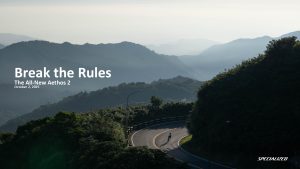轉自:umca
原來一個小時的訓練台 LSD是不足以燃燒脂肪跟建立耐力的,下次調整一下,延伸到2小時,再進而進到3小時。
Winter Bike Training
Building endurance on the bike with long, steady distance and improving economy with indoor bicycle training.
by John Hughes
John Hughes, director of the UMCA, is a certified as a USCF cycling coach and a National Strength and Conditioning Association personal trainer.

At the end of the summer my friend “Bill” e-mailed me:
Bill: “After yet another disappointing season on the bike, I think maybe I need to go back to square one and start over training. I\’ve probably never built a sufficient base.
“I have a couple of questions, if you could help me out. How long do I have to ride to get some training effect? Is one hour on the CompuTrainer® a waste of time? Would two 3-hour rides be more beneficial than three 2-hour rides on the bike?
“Should I expect some HR upward drift as the workout continues?”
I responded: “Long slow distance training has several effects. At a moderate heart rate you are burning more fat and less carbs. The benefit is not to make you thinner. Rather, fat is metabolized in the mitochondria (carbs are metabolized elsewhere in the cells). Because you are burning more fat your body will increase the mitochondrial density, allowing more blood flow to the muscles.
“To achieve this you need to go for relatively long, relatively easy rides. As Chris Kostman pointed out in his article Doing the Double: Five Mistakes to Avoid: “LSD doesn\’t stand for long slow distance, it stands for long, steady distance.”
“Steady is the key. Start with three 2-hour rides and, as your body adapts, change the stimulus to two 3-hour rides.
“A second benefit is to increase pedaling economy. Partly this is developing better form, a rounder stroke, and partly this is increasing neuromuscular efficiency, improving the firing pattern of the nerves to the muscles.
“One hour trainer rides aren\’t long enough to improve the metabolism of fat and thus the mitochondrial density, but you can improve your pedaling economy.
“Finally, yes, you should experience some cardiovascular drift during long rides. Your heart-rate will go up even if you are just maintaining the same power output.”
Bill: “Regarding the LSD. Not surprised by your longer is better, or that one hour is too short. I have been speaking to a coach, who claimed there is significant benefit to even a one-hour workout. I believe I understand the fat burning stuff. Essentially you are trying to ride at a pace that allows your body to burn a high percentage of fat. Then, over time with the LSD you will develop more power at that same percentage of fat burning. This should lead to riding faster and longer, at a pace your body can handle.
John: “Fat burning happens in a different part of the cell and uses different enzymes than burning carbs. So, you want to stress (overload) this energy system by doing progressively longer rides, which increases the enzymes, blood flow, etc.
“During long rides we inevitably slow down and start using our fat burning system – and if you haven\’t trained it, then you can\’t ride as well on this fuel source. So, you are building more endurance, not more power with LSD training.
“Power is the result of harder, shorter workouts – and, yes, a one-hour workout on the C/T can help with this. It\’s a mile down the dirt road to my paper and mailbox. When I\’m pressed for time, I ride my MTB down and back. It\’s 20 minutes to get back up and that\’s a real power workout but won\’t doesn\’t do diddly for my endurance.”
Bill: “Well, maybe I used the wrong language. If I just rode the CompuTrainer® at a given wattage for several months wouldn\’t the building of endurance allow me, over time, to push a higher wattage for a given HR?”
John: “If you rode the C/T at a wattage equivalent to approximately 75% of your lactate threshold for months, you wouldn\’t increase your power. What you would do is increase the time you could ride at that level of exertion. At relatively low levels of exertion, all you\’re working are the slow-twitch muscles.
“To build power, you also need to overload the fast-twitch muscles, which only start working when you are going pretty hard . . . and overload the heart so that you increase the stroke volume to deliver more blood to those working muscles . . . and overload the lactate system so your body can clear lactate more efficiently so you don\’t go anaerobic.
“That\’s why, if all you ever do is LSD, you\’ll only be a slow rider.
“My training system has three phases:
- Base: building endurance to go long (slowly)
- Intensity: building power to go fast/hard (for short distances)
- Peak: developing cruising speed for events – faster than your LSD rides, but not as fast as intensity rides “To improve you need to build your endurance, and then change the overload to build power, etc.
Bill: “I understand, I think, what you are saying. But I\’ve also read that runners and cyclists do too much intensity and that you can improve over time with just LSD training.”
John: “Yes, people do too much hard riding and not enough steady distance. And yes, you can get marginal increases in speed with just LSD, but that is attributable to improved economy and efficiency. You\’re running with less wasted motion, riding with a rounder stroke, etc. It doesn\’t have much to do with increased cardio-vascular output nor increased muscle power.
“The training model that most coaches use is: overload + recovery –> improvement. The more specific the overload, the more improvement in that particular aspect.
“After a while LSD isn\’t overloading your body, unless you keep ramping up the volume. And, you are still only overloading the slow twitch muscles and the beta oxidative (fat burning) energy system.
“That\’s part of the package, but not all of it: you also need to overload the aerobic oxidative energy system (carb burning), which allows you to cruise at a fairly brisk pace without going anaerobic. Finally, you need to stress the anaerobic energy system (carb burning without enough oxygen) by engaging the fast twitch muscles.”
Bill: “Really appreciate your input on this subject. So what should I do this winter so I have a better season in 2006?”
John: “Well, start with those push-aways when dessert is served at the dinner .
“Go back to your first questions: Is one hour on the CompuTrainer® a waste of time? Would two 3-hour rides be more beneficial than three 2-hour rides?
“I\’d say start with four rides a week on the C/T. Try for a couple of 90-minute rides at a steady pace. You should be working, but not breathing hard.
“And then do a couple of 30 minute rides just working on technique. Here are some suggestions:
“Pedal concentrating on four parts of the stroke:
| More Information
UltraCycling Magazine
Join the UMCA and receive six issues a year. |
 |
 Order back issues |
- Top: Apply power, imagining that you are pushing your knee forward toward the handlebars.
- Front: Apply power downward.
- Bottom: Apply power backward, with your foot pointed slightly downward. Imagine that you are scraping your toes across the floor.
- Back: Lift your leg so that your other leg doesn\’t need to push it up. Studies of pro cyclists have shown they don\’t really pull up, they just un-weight the leg.
“Since you have a CompuTrainer®, you can use the SpinScan® setting while doing the drills. Try to pedal so that both legs are putting out the same amount of power, and try to increase the smoothness of the power output around the stroke.
“One-legged pedaling is the best way to improve your stroke. Unclip your right foot and rest it on a stool, box, etc. Pedal at 50-60 rpms with the left leg for 30 to 60 seconds. Then pedal with both legs for a minute to recover (don\’t bother to clip in). Pedal again for 30 to 60 seconds with the left leg, and then with both legs to recover. Repeat the sequence three to six times and then switch legs.
“Another good drill is spin-ups, which should be done in a low gear; your heart-rate shouldn\’t rise too much. Start at about 80 rpms. Every minute, increase the cadence by 10 rpms. When you get to your maximum cadence, say 120 or 130 rpms, hold for a minute. Then work back down by 10 rpms per minute.
“Over several months ramp the 90-minute rides up to three hours. These will improve your endurance as we discussed earlier. And, anything over two hours counts in the Indoor Challenge.
“Similarly, extend the length of your drills, for example, increasing the number of sets of one-legged pedaling and/or the duration of the sets.
“And don\’t forget those \’push-aways\’ from the dinner table!”





